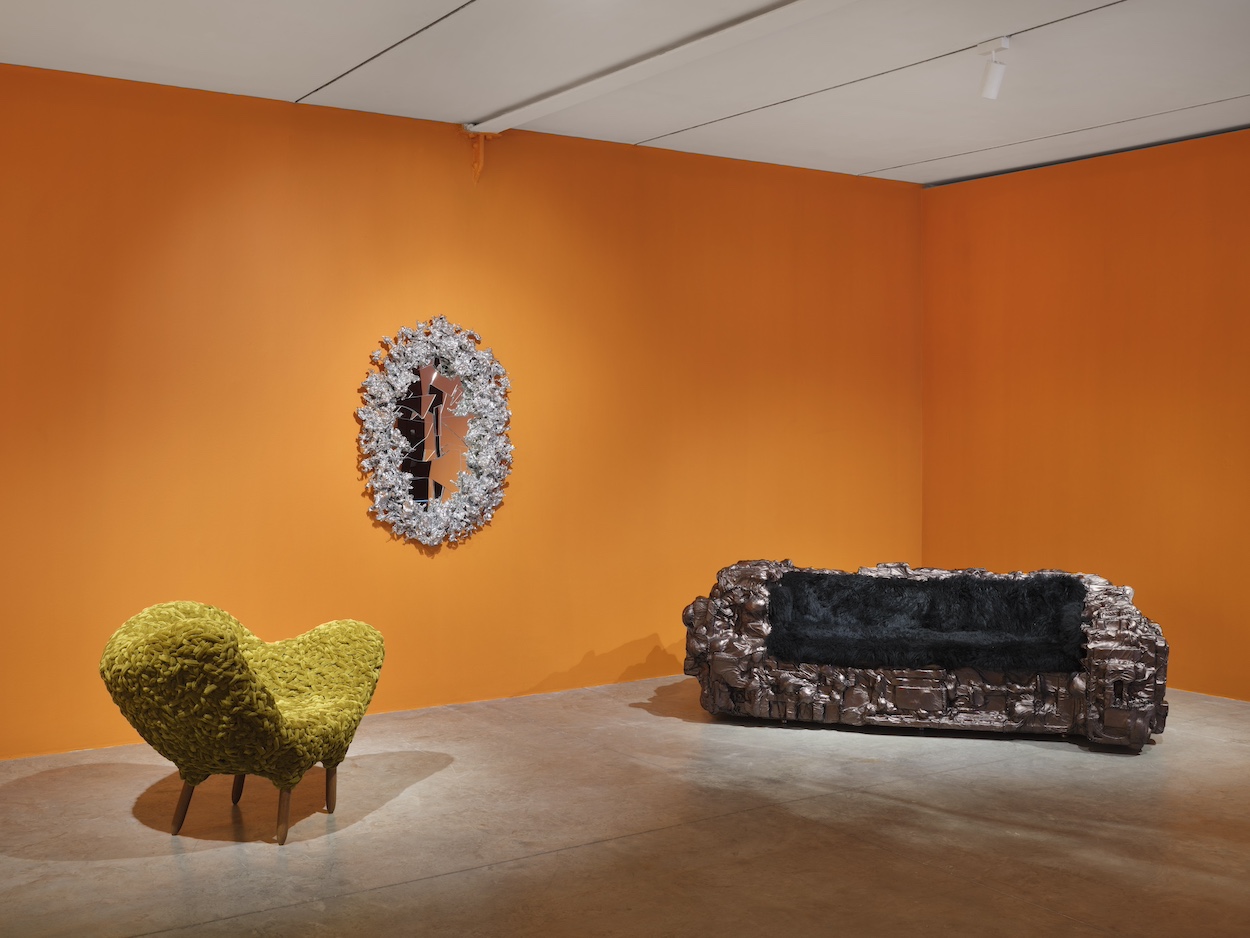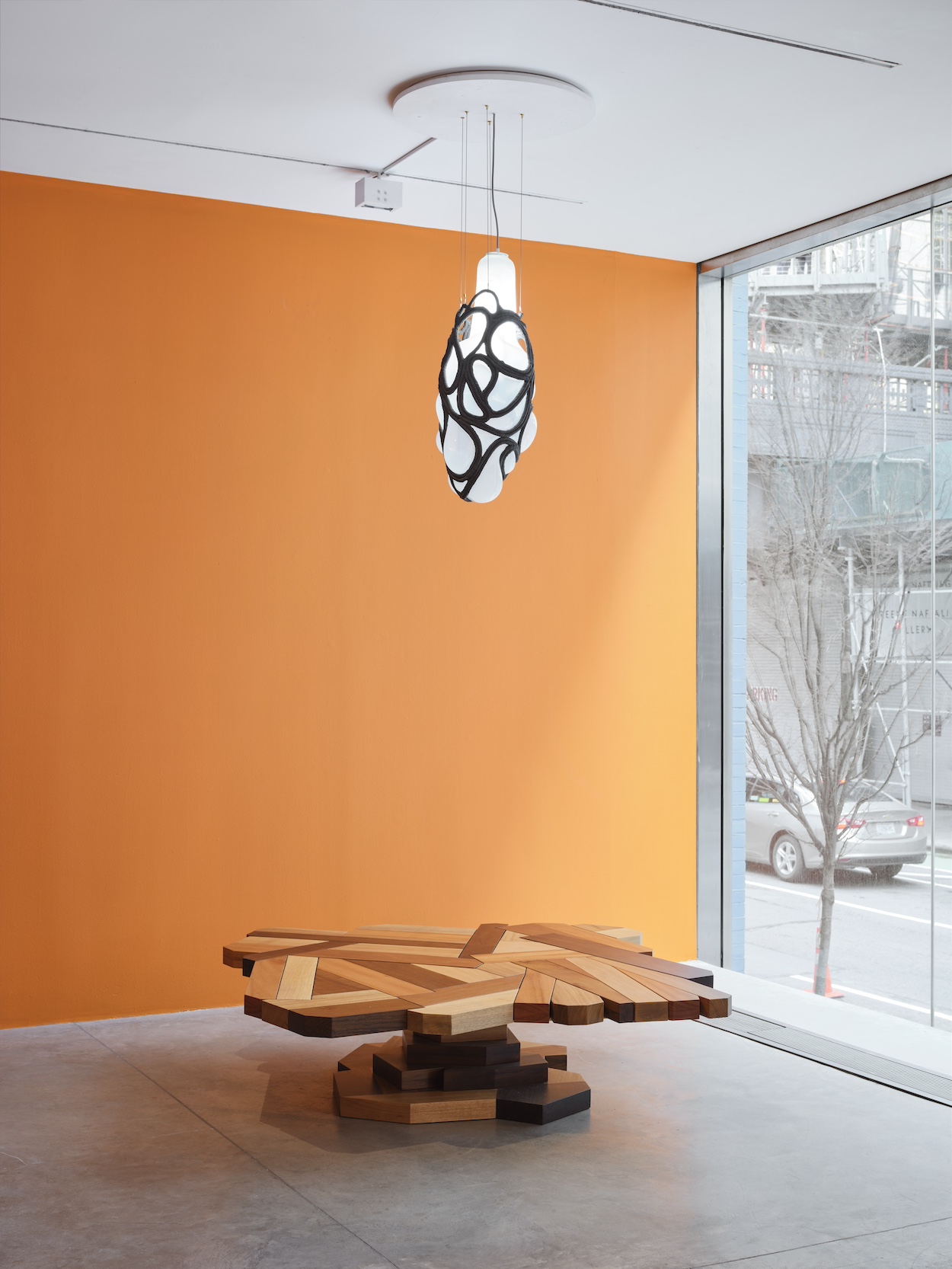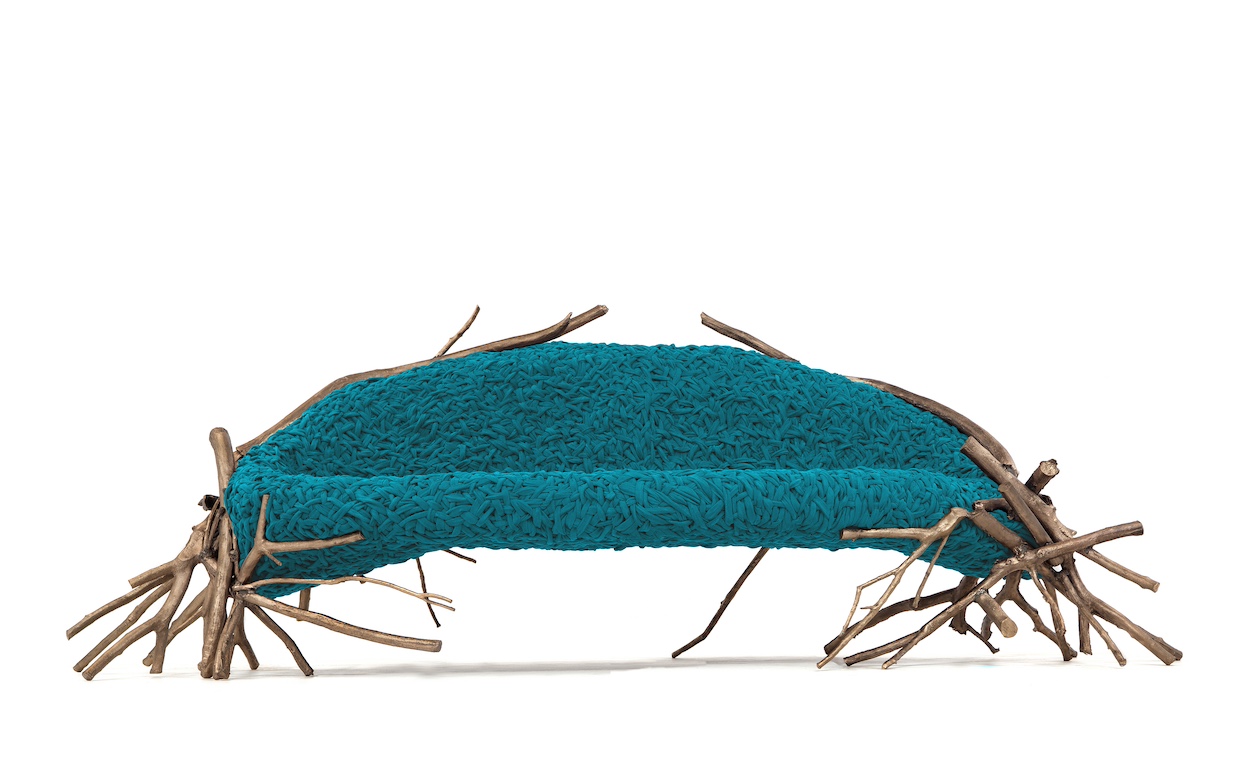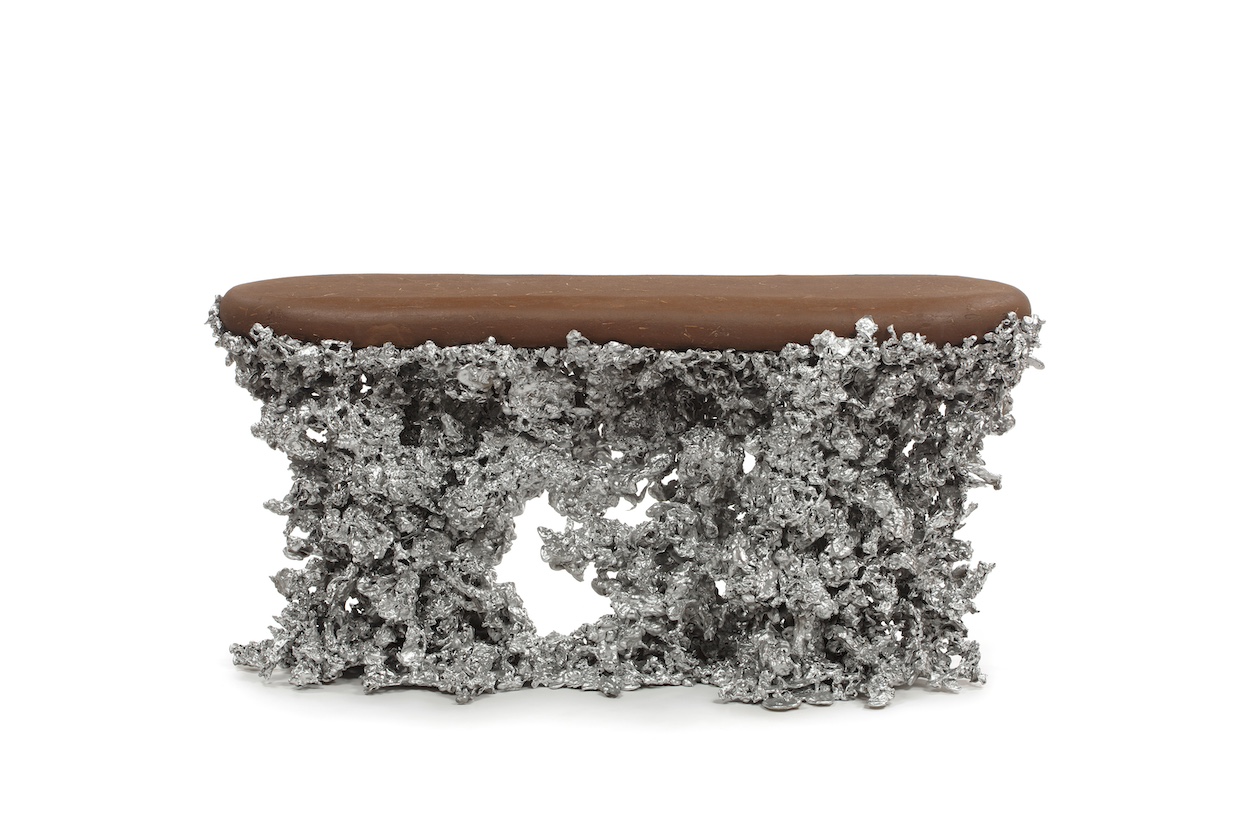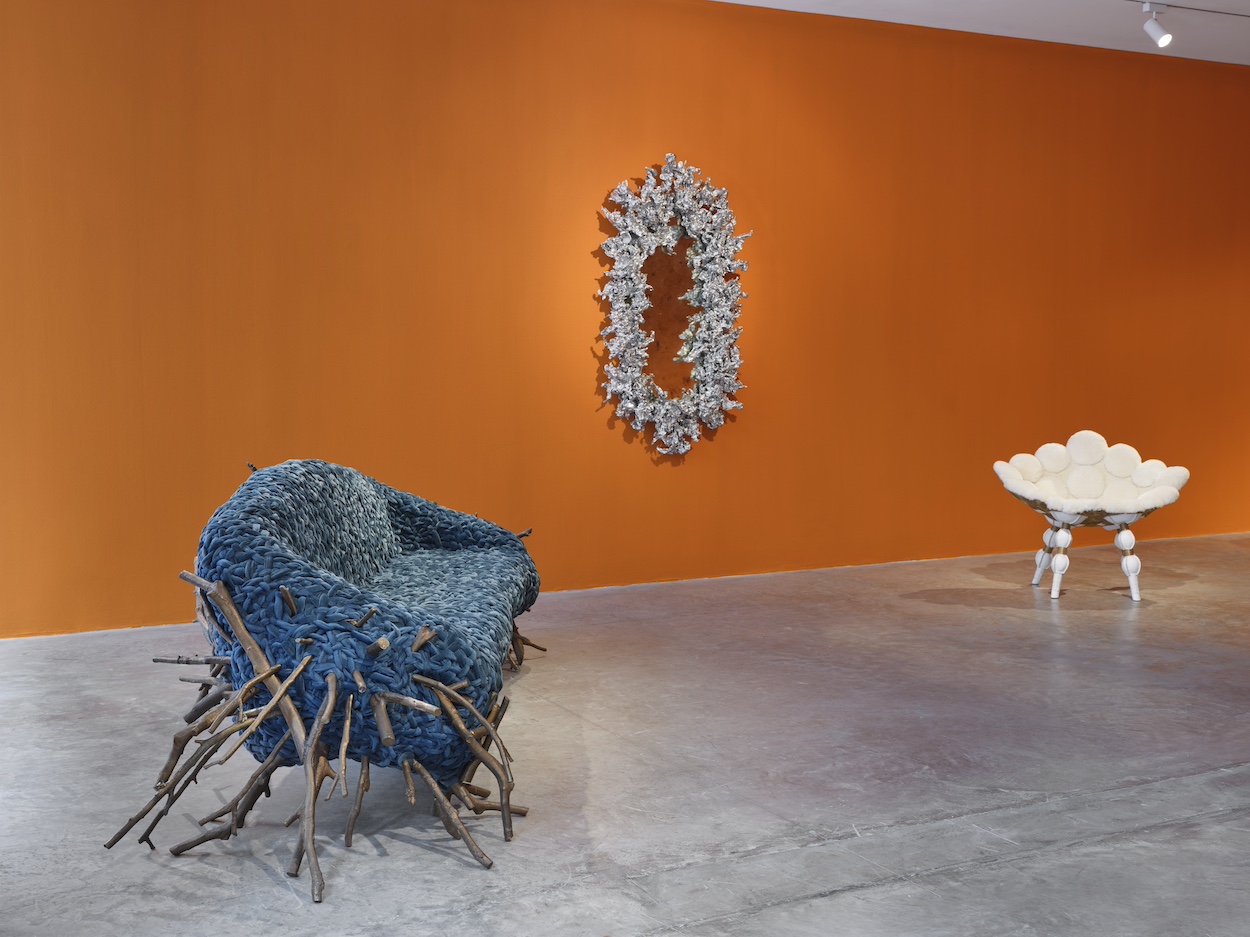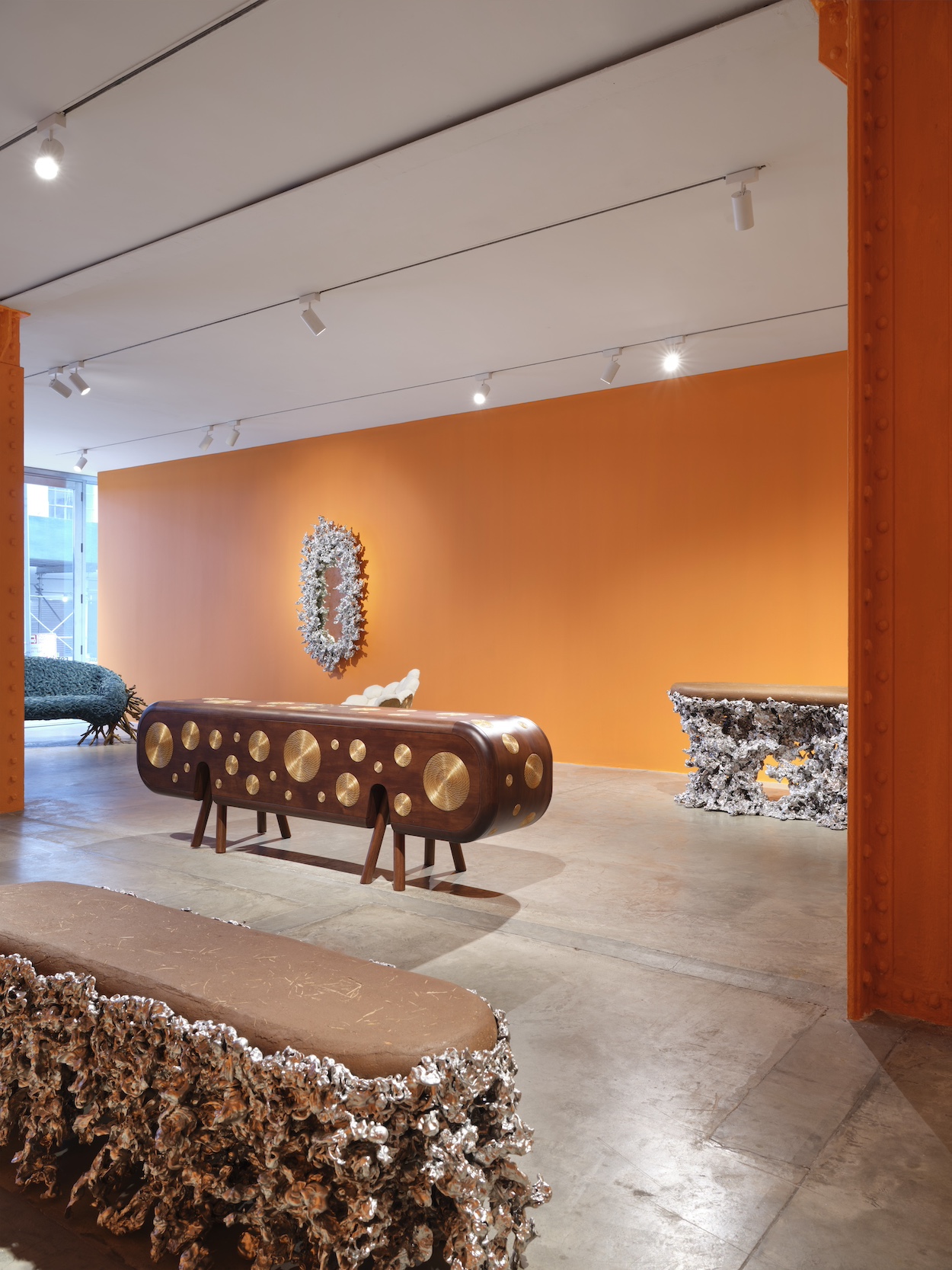This year marks the 40th anniversary of Brazilian brothers Fernando and Humberto Campana establishing Estúdio Campana. It’s a monumental achievement in the mercurial design industry and a testament to the vibrancy and flexibility of their vision, which encompasses architecture, fashion, furniture making, and landscaping. The celebrations might be tempered by the loss of Fernando, who died in 2022, but his legacy will live on as one of their major projects—the enormous Campana Park in their hometown of Brotas, encompassing 20,000 native tree seedlings and a dozen pavilions to host scientific and artistic research—comes close to fruition.
Maria Cristina Didero and Francesca Molteni have made a documentary on the brothers and their work, We the Others, which is slated to premiere at Triennale Milano this year. “On the Road,” a glorious exhibition of new work, some made by the brothers and some made for the first time by Humberto alone, recently opened at Friedman Benda, the studio’s longtime New York City gallery. The show’s 13 pieces highlight the brothers’ talent for transformation: for the Galactic sofa, stitched leather reshapes stacks of upcycled packaging polystyrene into what seems to be a vacuum-sealed seat. Nearby, a bench and console appear to float ancient adobe slabs on curling crunches of aluminum. The pieces are wondrous, and undeniably emotional.
Humberto recently caught up with Surface from his São Paulo studio to talk about dreaming of his brother, how he began making new work, and contaminating people with beauty. The interview has been edited and condensed for clarity.
What made you want to do this show now—how did you know you were ready?
I was discussing this show with Friedman Benda for four years. After Fernando died, I needed to grab some eyes as a salvation, to not get drowned in my emotions. Little by little, things started to become clear. It was a catharsis. I wanted to express my sadness but also my hopes.
How does a piece like the Galactic Sofa do this?
Besides storytelling, it connects to our DNA, which is using simple materials and techniques. The sofa was conceived by grabbing scraps of styrofoam to make a collage; the aluminum [in other pieces] are also scraps. I’m happy because there’s a connection, a unity. And I don’t feel that I’m cheating. I’m really connected to using the hands, simple technologies like the adobe.
Yes, please tell me how the adobe pieces came to be.
I’ve been researching adobe since the pandemic. I first had the idea to use it with wood, but it was too perfect. I wanted to create tension. Then came the idea for aluminum, which Fernando had pointed me to. I didn’t want to use it, but Fernando always wanted to be an astronaut and was obsessed with flying. One day, I had a dream to create a chandelier in the shape of planets, and I kept that in my mind. I didn’t do it because I was afraid it would be too perfect.
I deconstructed this fear, creating protuberances and deconstruction into the pieces. I didn’t want something cool. I wanted to insert ugliness, a little decadence. Everybody’s facing a very dystopic moment and it’s impossible not to be aware of what’s happening. I want to bring that emotion of dystopia, a world melting and exploding. Perfection is not in our DNA. It’s easy for an artist to get seduced by something beautiful and practical, but it’s not your idea in the end. So it was a relationship between me and my soul, in terms of who I am and what is my essence. Fernando’s loss drove me to this very deep voyage. On the Road is a trip, a journey alone.
You can definitely sense grief in the pieces, and yet there seems to be hope in others, like the Capim Dourado Buffet, which is such a celebration of craft.
I’ll always be in love with this fiber. I did a collection of diamond jewelry with it, but I also wanted to set it into furniture. The first pieces were the chairs; I connected the discs to make back rests, and wanted to bring out a Brazilian identity using wood but with a new element of the golden disc. It’s the collection’s most well-behaved piece. The buffet was made by a company that exports furniture, so they have the know-how that my studio doesn’t have. Despite being so perfect, the piece has a connection to our early works.
Speaking of the early works, how did the retrospective documentary come about?
Maria Cristina and Francesca had the idea to shoot a documentary about us, but with other people’s vision of our work. You hear from Paola Antonelli, Marie-Ange Brayer and Chiara Parisi of Centre Pompidou, Julia Maendler from Louis Vuitton, and many others. The first clip is very subtle, very delicate, the way Fernando is on the screen. I was very touched. I need to watch more because it’s going to be in Milan, but I don’t want to cry too much. I want to be prepared so I can get used to the emotion. It also shows my hometown, the people I live with, and the park.
What’s the status of the park right now?
We’re creating a foundation in the countryside with a heritage piece of land. It was a very abandoned area. I had refused to get connected to my hometown because my family had all passed away. Then I decided: no. Fernando and I had created workshops all over the place, so why not do that for my community? Why not create something that connects to environmental issues that will be a part of a regeneration? So we’re creating pavilions made with living plants: cactus, bamboo, and agave. It’ll be a place of healing the soul, healing nature, and a laboratory. A biologist is working on this to implant in other areas of Brazil. There will be food produced to eat. It’s a museum of our heritage, and works of other colleagues. It’s a place of sharing. A lot has been offered to me and now it’s time to give back. You know, I’m 71. I just want to give back to nature. Beauty contaminating people, with buildings, in silence.
“Estúdio Campana: On the Road” will be on view at Friedman Benda (515 West 26th St) until April 20.
Portrait by Fernando Laszlo, courtesy of Friedman Benda and Estúdio Campana



